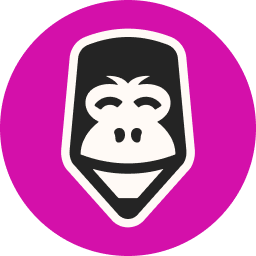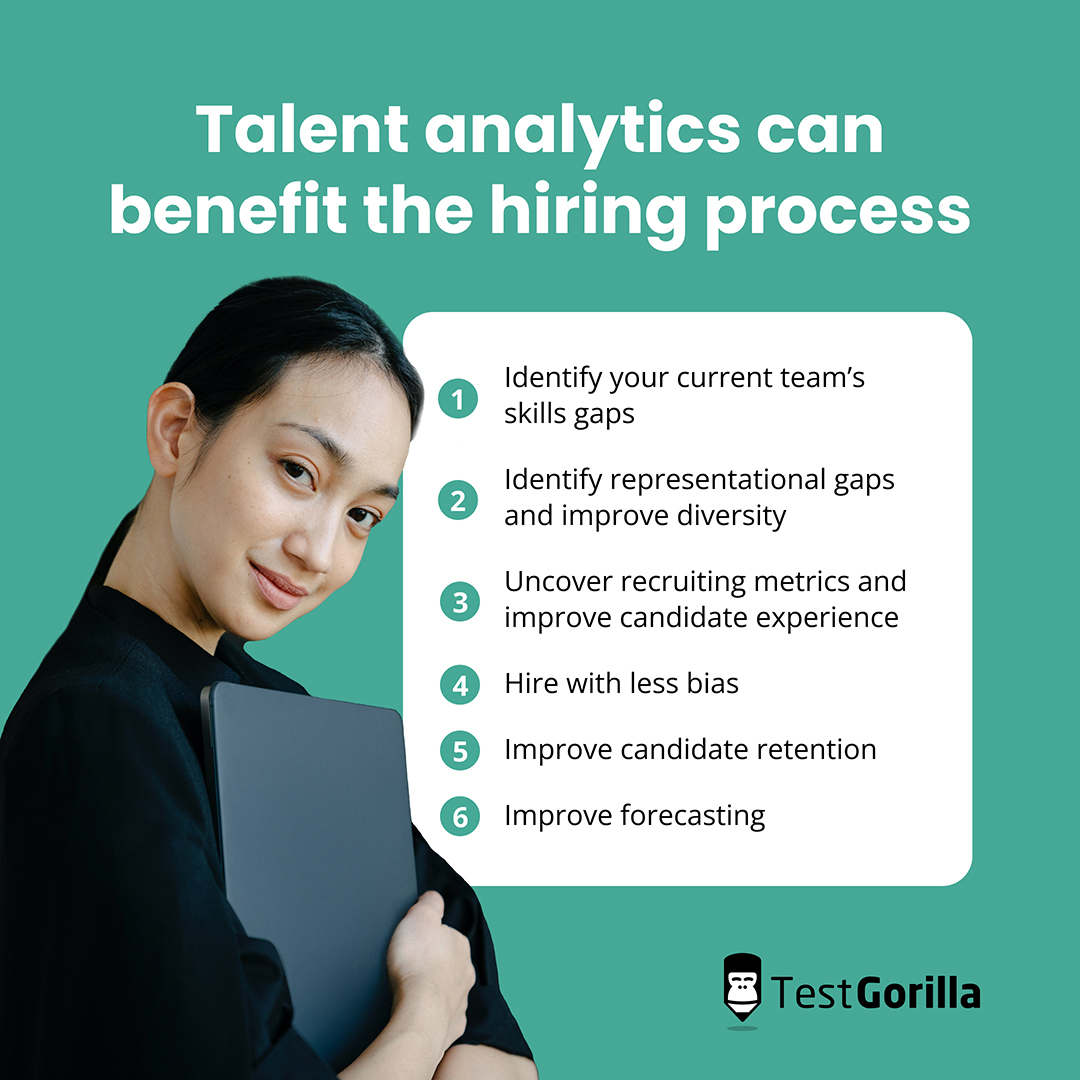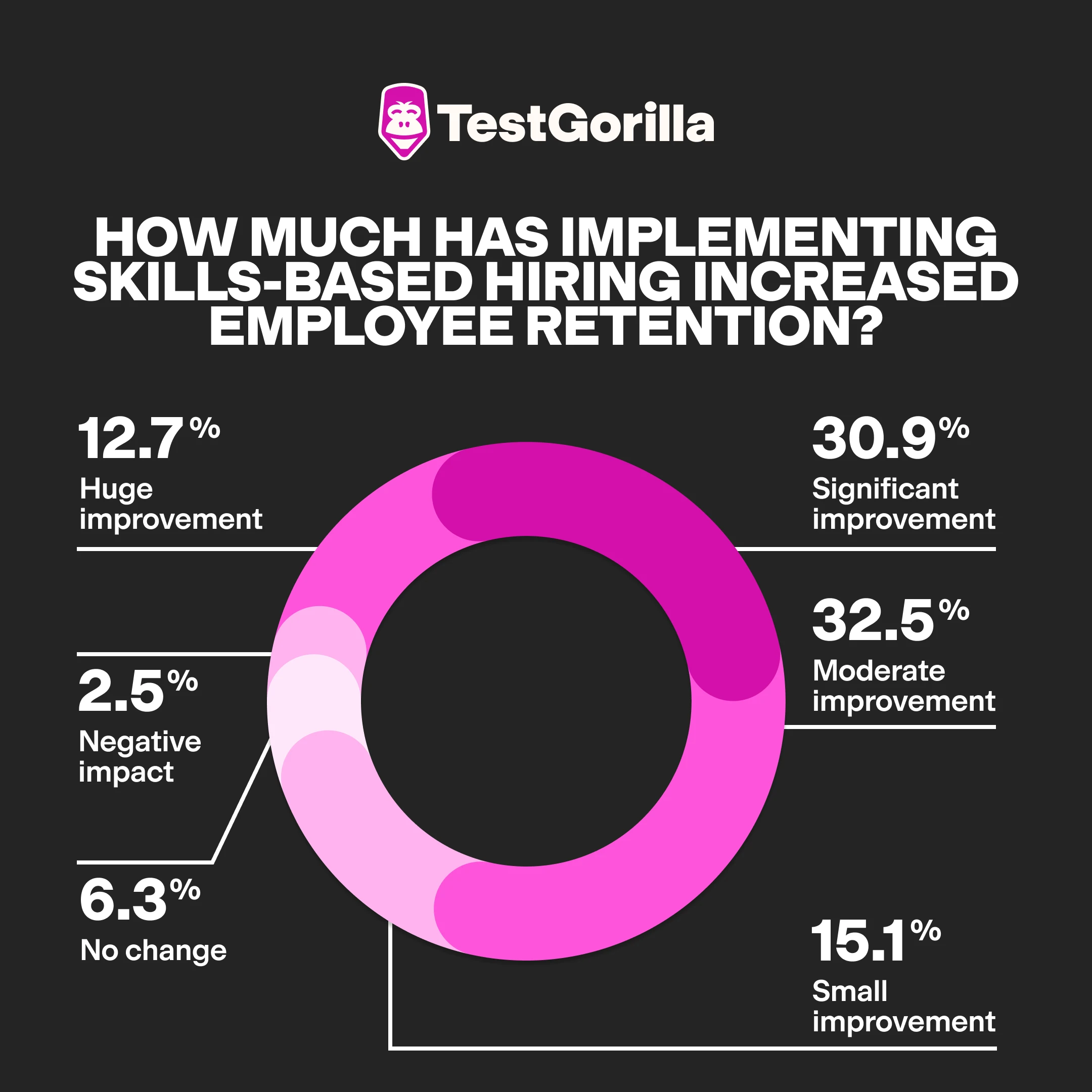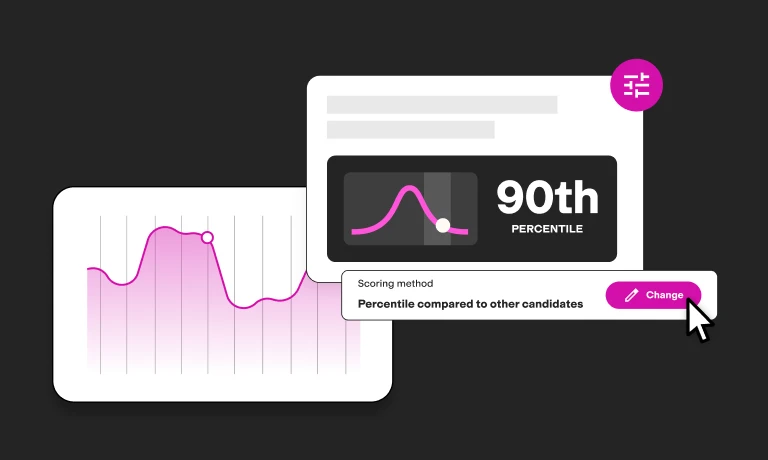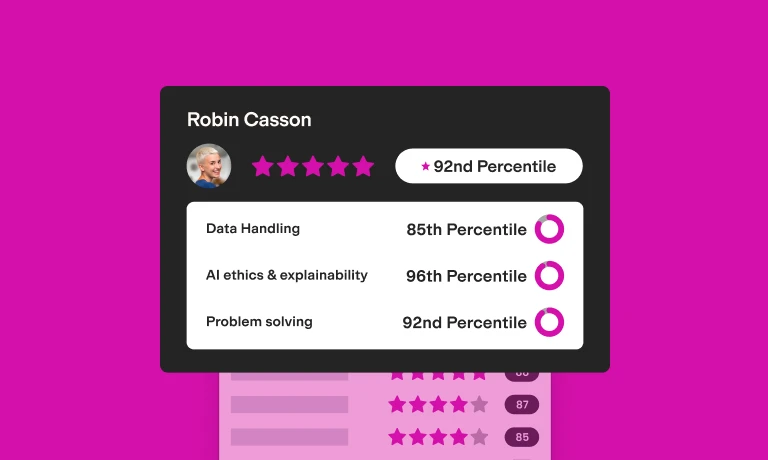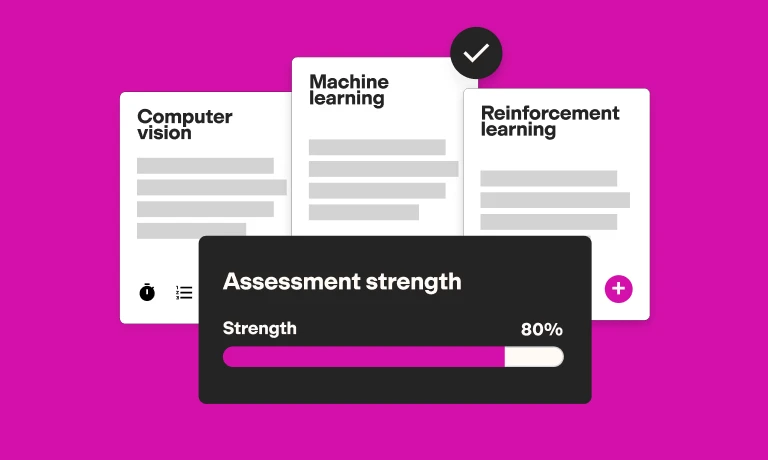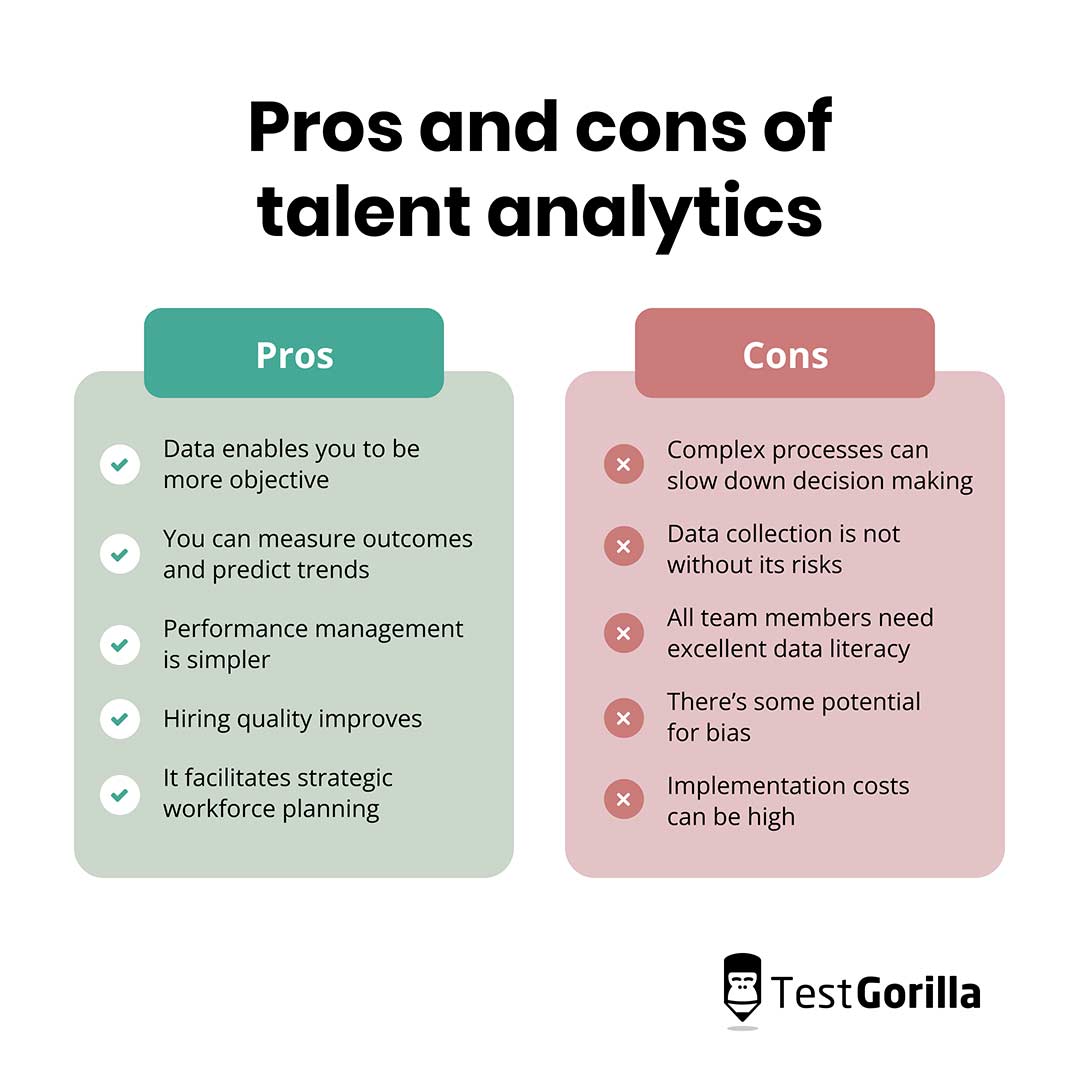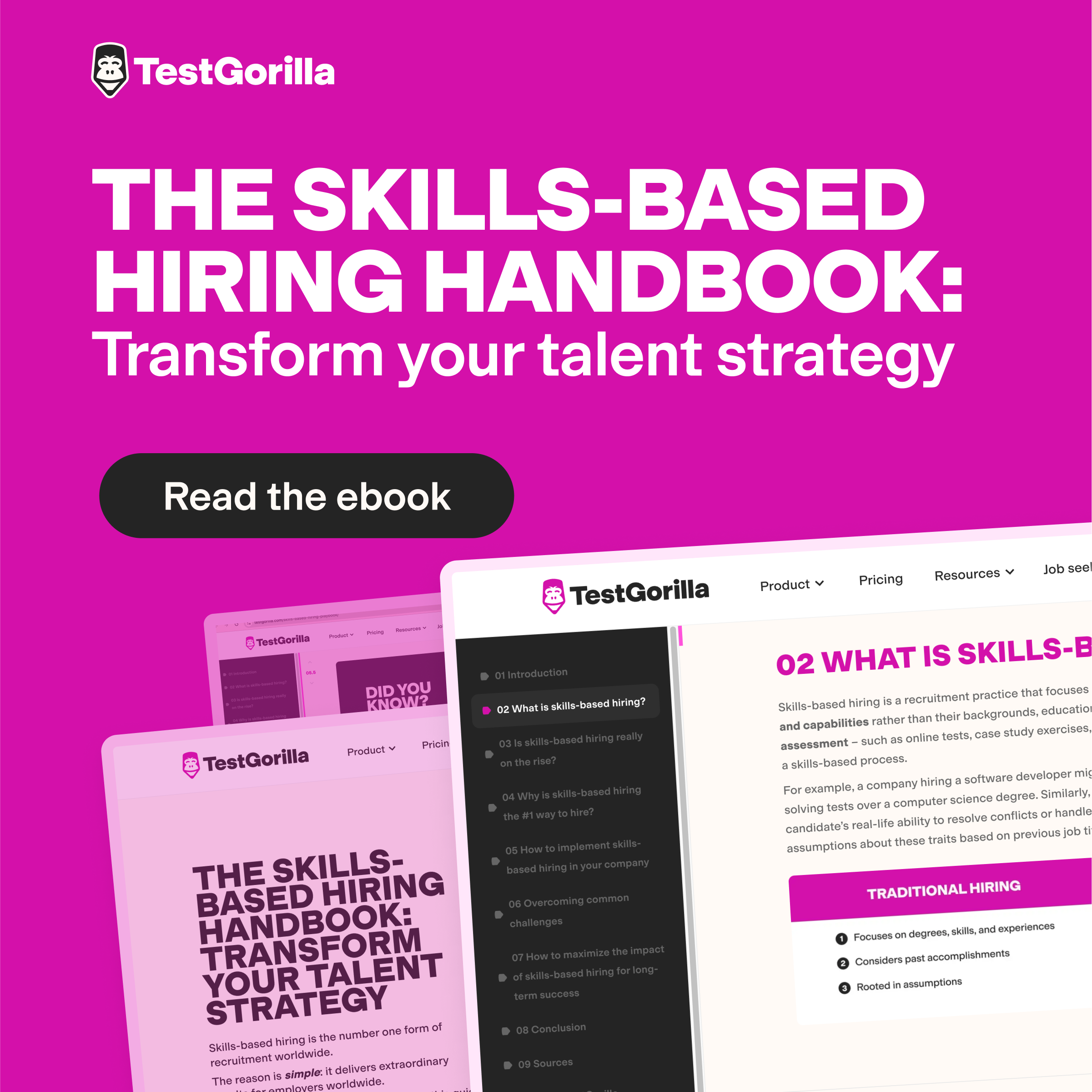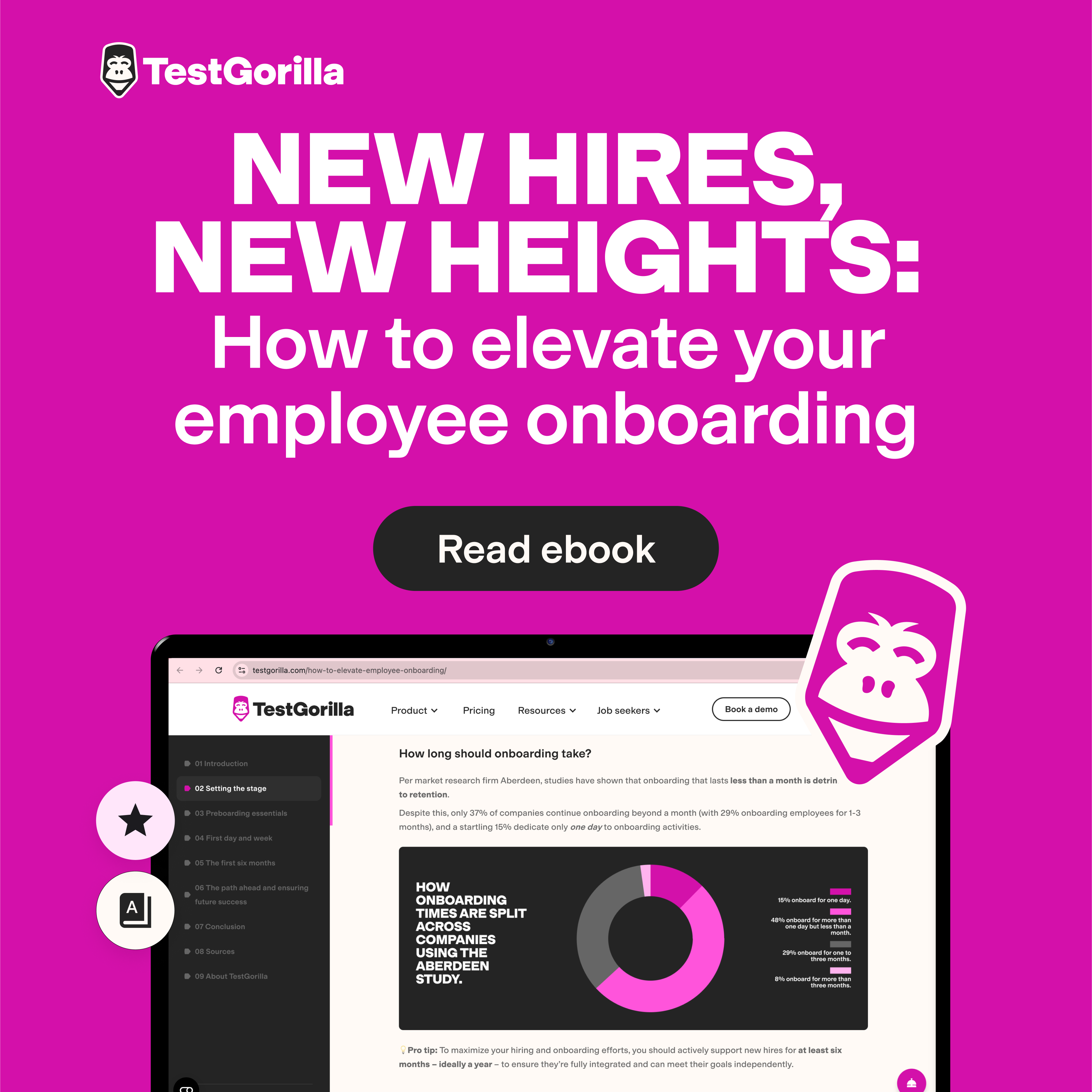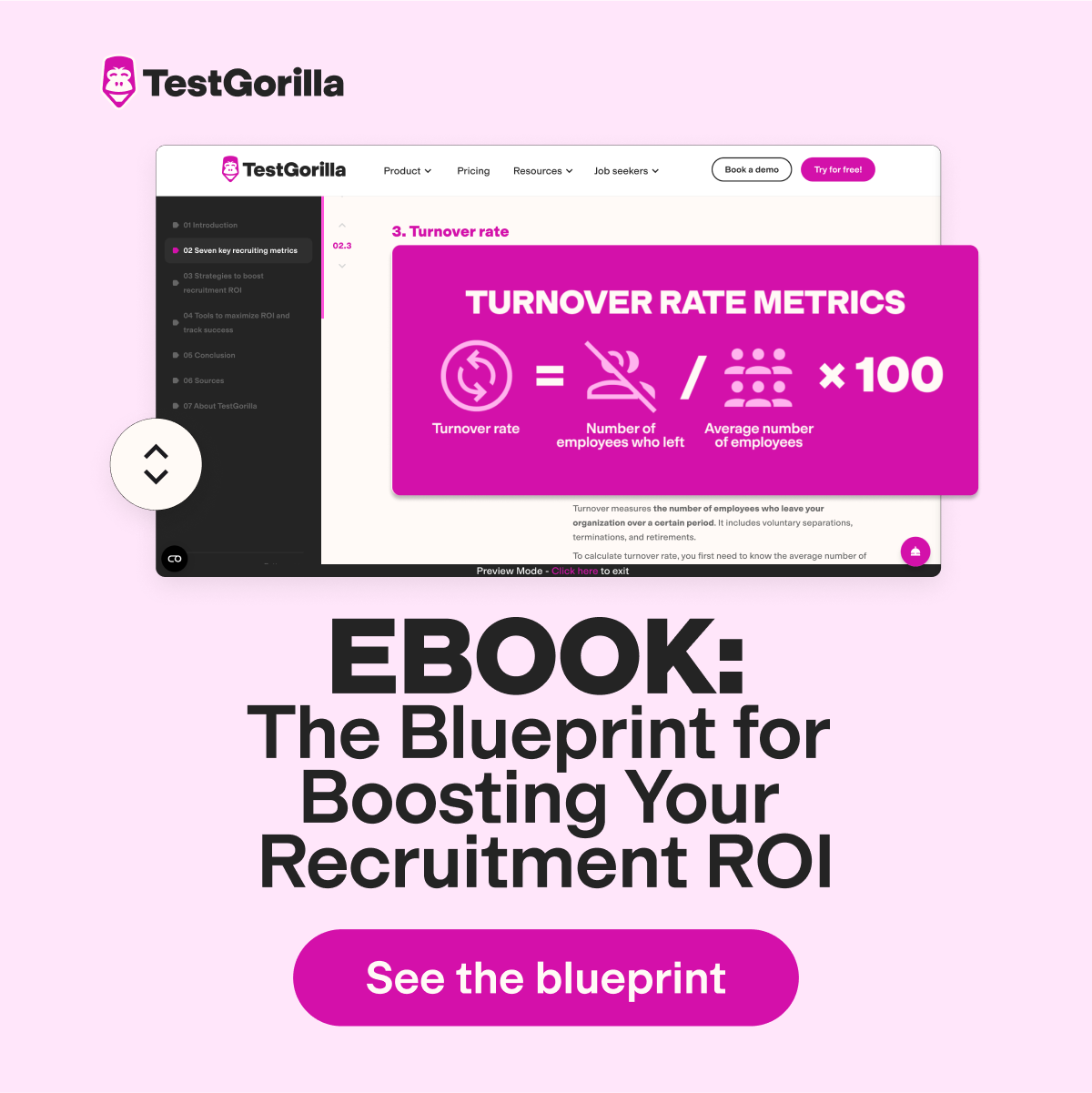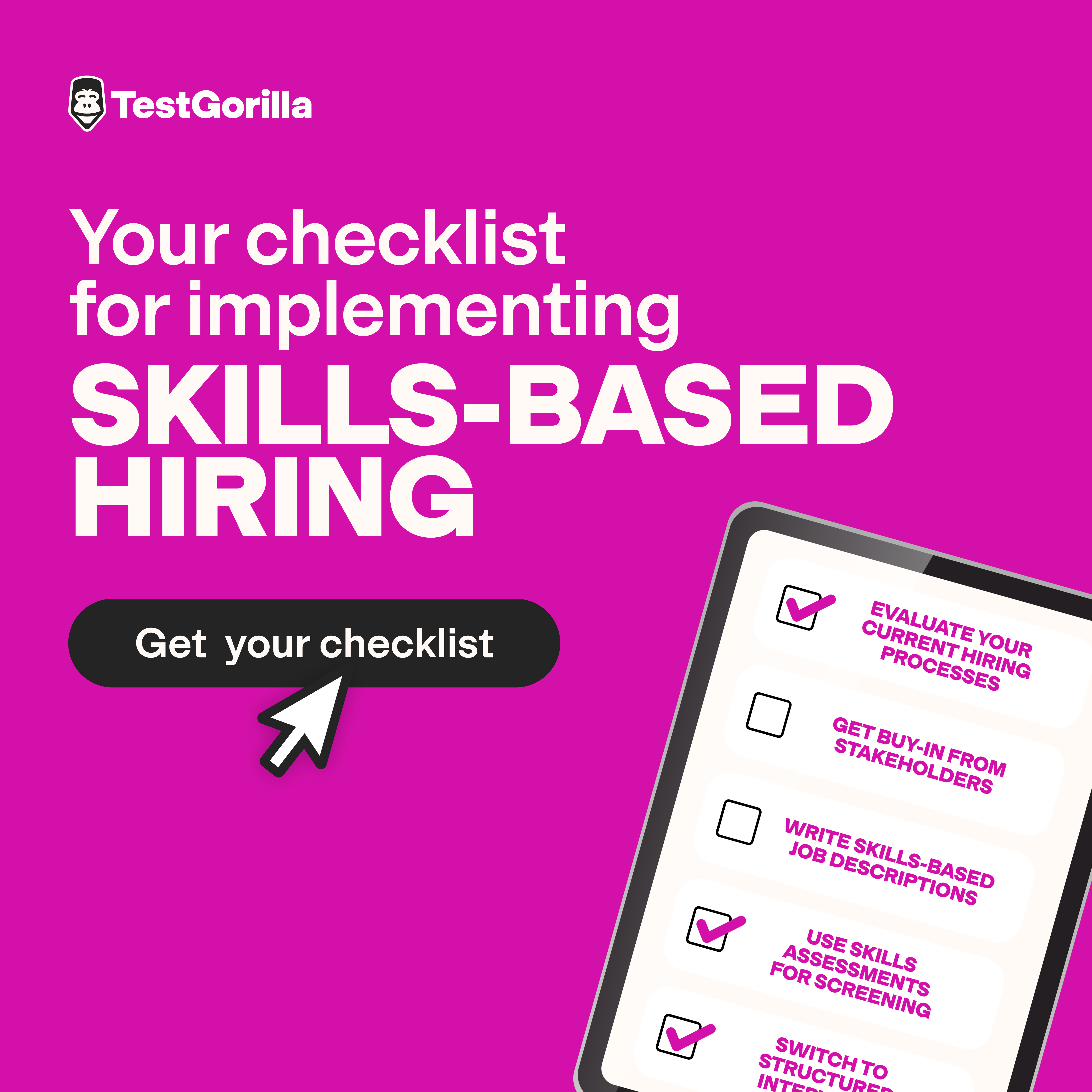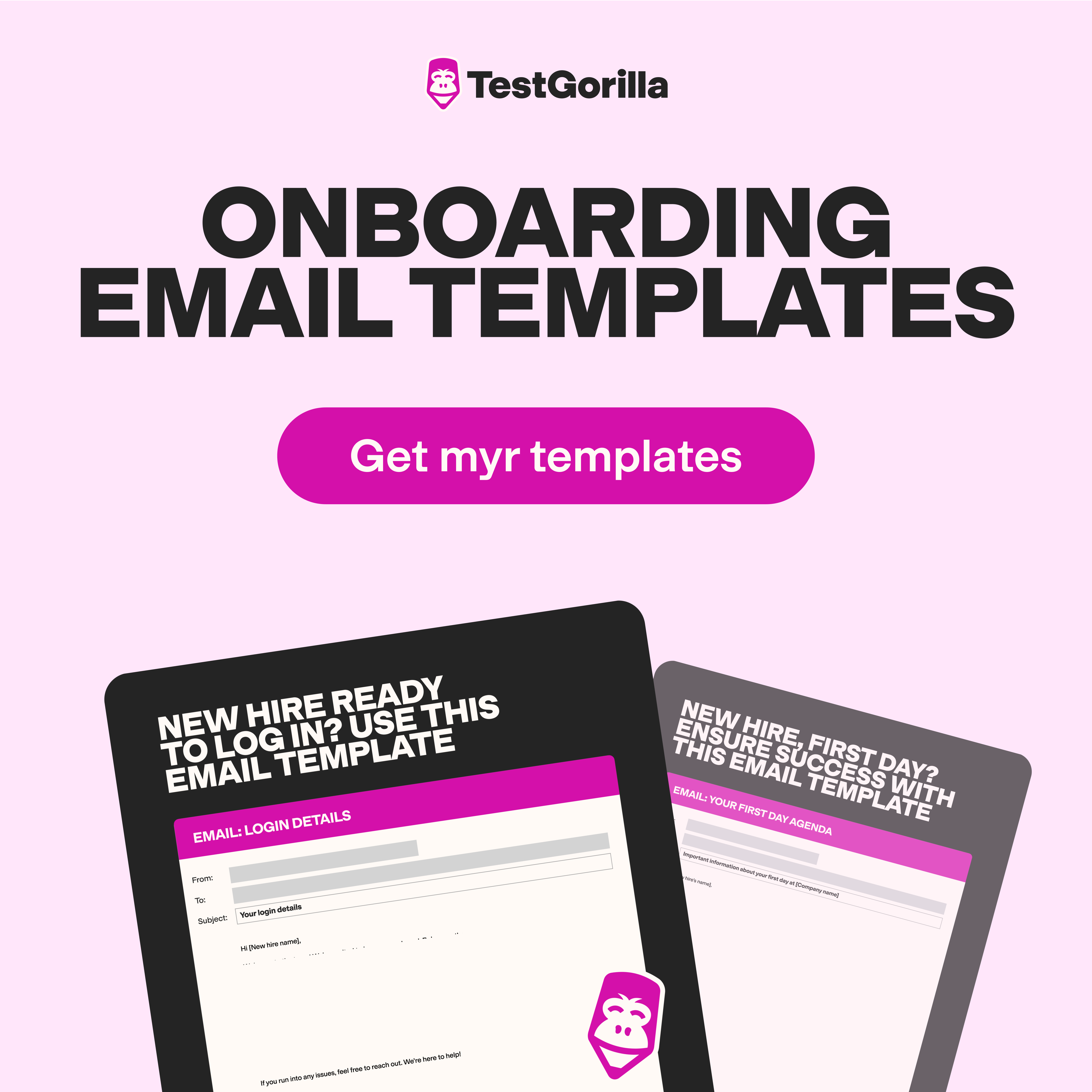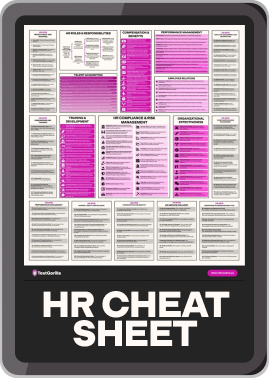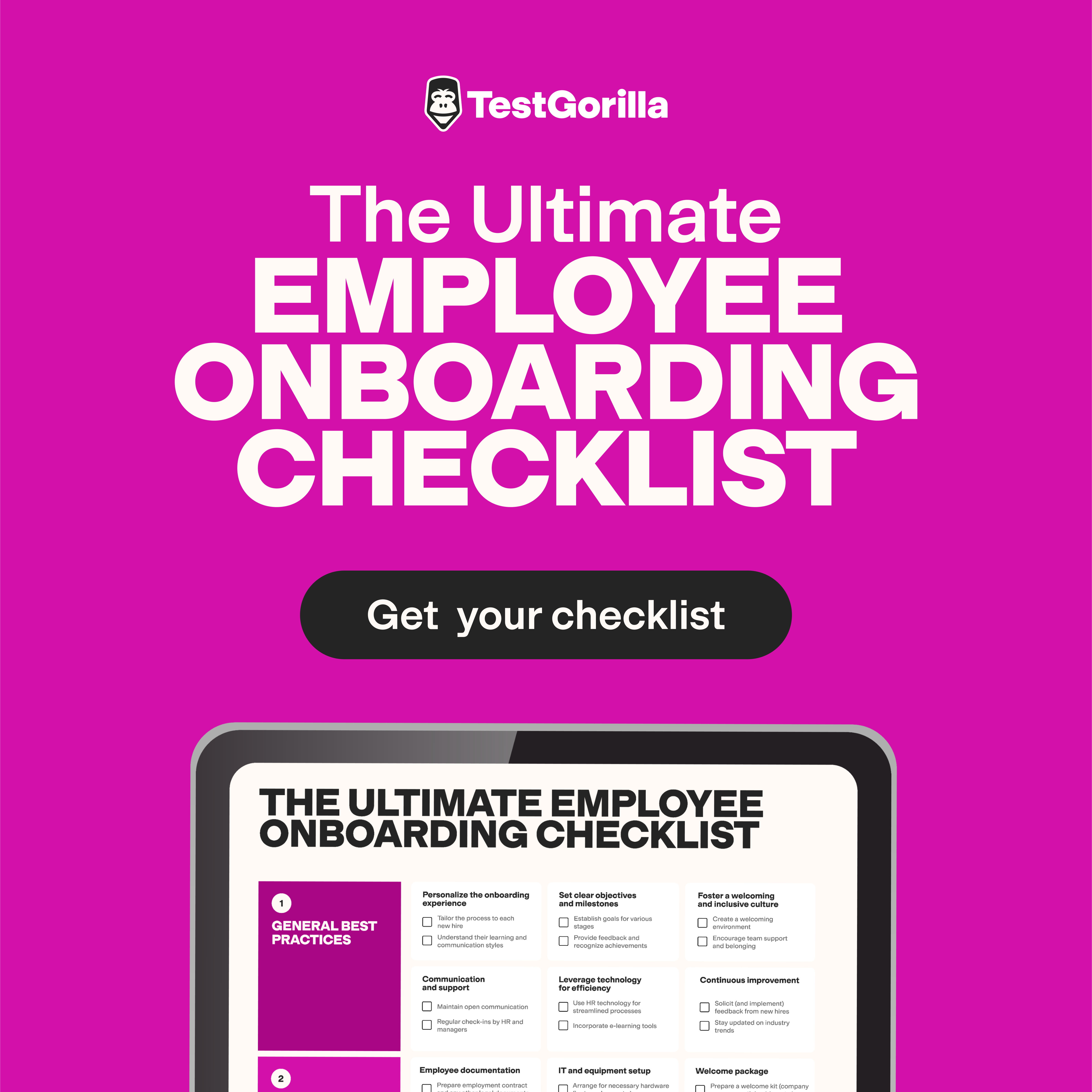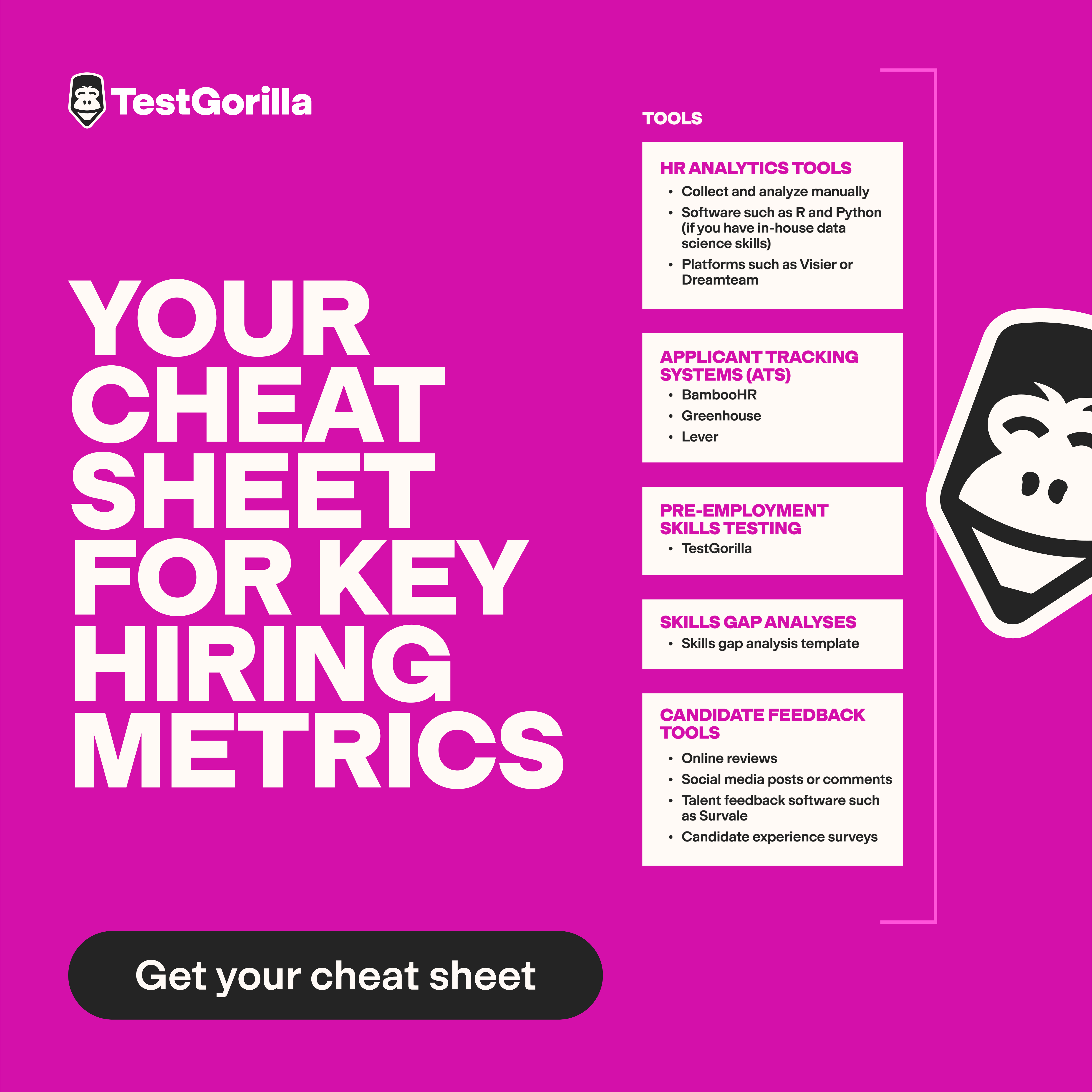Leverage talent analytics to make the most out of your workforce data
If data is the new oil, as The Economist boldly declared in 2017, most HR teams are still figuring out how to refine it.
And while talent analytics is poised to revolutionize HR processes and help teams make sense of the data they have, most HR teams still aren’t taking full advantage of this new tool.
In this article, we’ll show you why so many companies view talent analytics as a major priority and explain how to use it to build better recruitment and talent management processes.
Table of contents
What is talent analytics?
Talent analytics (also known as HR analytics, people analytics, and workforce analytics) is an approach in which HR teams collect and analyze organizational data on employees’ behaviors, attitudes, and performance to make better workforce decisions and help drive business growth.
Talent analytics enables organizations to:
Understand their employees and candidates better
Provide their employees with what they need to do their best work
Identify and address skills gaps
Make better use of their resources
Google, among other top-performing organizations, has built a strong people analytics function that informs everything they do to find, recruit, and retain talent.
Some companies use talent analytics to create internal platforms where they can match current employees to vacant role opportunities within the organization based on their skill profiles.
Another use case would be using talent analytics to evaluate the characteristics and skills of your company’s top-performing salespeople. You could then test candidates on those skills as part of a pre-employment assessment.
To collect and analyze data of employees’ and candidates’ performance and potential, you need the right tools and technological infrastructure. In most cases, this includes elements like:
Skills assessment platforms at the top of your recruitment funnel
Regular employee surveys or tests
An in-depth analysis (like a reporting dashboard of sorts) of key HR metrics on employee performance, satisfaction, retention, and more
Most talent analytics tools have a dashboard where you can get an overview of your most important metrics, plus in-depth reports on the state of your workforce and talent pool.
However, as Harvard Business Review points out, data reflects an organization’s past decisions and performance, and is therefore not neutral.
On the contrary, it includes existing unconscious biases, which means that you need to be particularly mindful of the way you collect data and construct narratives and build strategies based on it.
Talent analytics: An untapped opportunity?
The importance of talent analytics is clearly understood by HR teams, which are already adapting to this new world. Back in 2018, 50% of hiring professionals were already using big data as an essential part of their strategy – and the numbers have only been increasing since.
And yet, most HR teams know they aren’t taking full advantage of their data yet.
According to Gartner, only 21% of HR leaders believe their organizations use their talent data effectively to shape their talent acquisition and recruitment processes and improve employee engagement and productivity.
So, how can you make sure you’re making the most of your HR data? And where should you use it to get the highest return on your investment?
There’s one area of HR that stands to benefit the most from talent analytics: hiring.
How talent analytics can reshape hiring
Hiring the wrong people is expensive. Some of the most common reasons for bad hires include:
Unconscious biases of the hiring manager or team
Candidates lying about their qualifications or skills
A strong pressure to fill a role quickly
The lack of qualified candidates
All of these problems could be avoided if you use talent analytics and HR data more proactively.
With talent analytics, you can use data to inform your hiring strategy and process rather than just focus on filling a position as soon as possible.
Here’s how talent analytics can benefit the hiring process.
1. Identify your current team’s skills gaps
One simple way to hire better candidates is to identify your current team’s skills gaps. Use skills tests in combination with our five talent assessment templates to see where your team falls short – and recruit for skills that can help you improve overall performance.
With skills tests, you can evaluate hard and soft skills and leverage that data to hire employees that would be able to make a big impact from the start.
Alternatively, you can use skill assessments to identify diamond-in-the-rough employees, i.e. those who are currently underperforming but who may be able to excel in a different role.
2. Identify representational gaps and improve diversity
There are countless benefits to diversity in the workplace. Diverse teams:
Are more innovative and creative
Solve problems faster
Perform better
Make better decisions – and the list goes on
By using talent analytics to monitor the diversity of your team (whether it’s race, gender, or any other measure of diversity), you can then use this data to inform your diversity hiring and retention initiatives.
3. Uncover key recruiting metrics and improve the candidate experience
You can unlock new insights about your hiring process by tracking key recruiting metrics like:
Application completion rate
Applicant-to-interview rate
Interview-to-offer rate
Offer-acceptance rate
Source of hire
Quality of hire
By tracking your entire hiring process, you can uncover any weak points in the candidate experience. For example, you may discover a flaw in the application process or learn that you need more candidate touchpoints.
4. Hire with less bias
By making data-driven hiring decisions, you can minimize unconscious bias and hiring discrimination.
This goes way beyond classic examples of hiring bias, such as interviewer bias. By building a data-first hiring process, you’ll be able to benefit from the many advantages of skills-based hiring – which, according to LinkedIn, is gradually becoming the gold standard of recruitment.
That’s also what we’ve uncovered in our 2024 report on the State of Skills-Based Hiring. Unbiased talent assessment and analytics:
Gives employers the opportunity to focus on skills, rather than on resumes, which 94% agree is a better way to predict job success
Gives candidates the opportunity to demonstrate their skills, which, according to 86% of them improves their chances of finding a dream job
5. Improve candidate retention
All of the above enables you to identify those candidates who align with what you need and have to offer.
91% of the employers we surveyed for the report told us that retention improved when they switched to skills-based hiring.
6. Improve forecasting
While your forecasting model may not be as complex as Google’s, you can use talent analytics to track historical hiring data, employee turnover, internal job changes, and factors like the current hiring rate.
Armed with this data, you can improve succession planning and predict any potential job openings or gaps in your team before they actually happen—giving you more time and less pressure to fill a role when it opens up.
The best insights on HR and recruitment, delivered to your inbox.
Biweekly updates. No spam. Unsubscribe any time.
How to use talent analytics at your organization
The many benefits of using talent analytics are obvious. But how can you actually introduce talent analytics into your hiring process?
Below, you’ll find our advice on how to implement talent analytics at your organization – starting with the hiring process.
1. Start with a data-driven mindset
Some of the most critical HR decisions, like whom to hire, are all-too-often, gut-driven. Other HR processes, like employee yearly reviews, can feel too heavy and slow.
Committing to a data-driven mindset can help alleviate both issues:
Use skills assessments to identify top talent and stop relying on resume screening or gut feelings
Streamline resource-intensive initiatives with data that’s easy to collect and interpret
The key is to commit to a data-driven culture in your HR team.
This starts with ensuring that everyone on your team:
Has basic data analysis skills
Is able to back up their decisions with data rather than intuition
Has the right tools to collect data, including a skills assessment platform like TestGorilla
Knows how to manage employees’ data in line with your country’s data privacy regulations
Regarding that last point, if you’re operating in the EU, check out our detailed guide to GDPR for employers and make sure you hire HR staff who have the right GDPR skills.
2. Use an end-to-end HR technology stack
You won’t be able to make data-driven decisions unless you have a system that gathers data.
To run a successful talent analytics program, you will need a true end-to-end HR technology stack that enables you to track employee data at all stages of the employee lifecycle, starting from the application process and ending at the moment an employee leaves the company.
For this, you need to:
Provide your team the right HR and data analytics tools, including skills testing platforms like TestGorilla, applicant tracking systems like Greenhouse and Personio, and business analytics tools like Tableau and PowerBI
Make sure each of your HR tools integrates well with the rest of your tech stack for a seamless data exchange between platforms
Partner with your company’s IT team to develop robust data governance principles to make sure employees’ data is secure
Train employees on how to access and analyze data and make sure your processes for talent acquisition and talent management are intuitive and easy to follow: If data isn’t easy to access and easy to interpret, it will never be used
3. Identify specific challenges and KPIs
Once you commit to a data-driven culture, you can more easily identify the problems you want to solve as a HR team, and then track your progress towards those goals.
Identify specific challenges you want to address and then identify the key performance indicators (KPI) that will help you measure your progress. For example:
If you often have lots of vacant roles, track time to hire, turnover, and evaluate the employee experience
If your time to hire is high, track the average duration of each hiring stage, the efficiency of your recruitment channels, and candidate drop-off rates
If your candidate experience is poor, use feedback surveys and track application completion rates
If you notice employee engagement is low, assess employee satisfaction scores, participation rates in company activities, and feedback from performance reviews and one-on-ones
4. Build your ideal candidate persona
Based on what you learn from data from your current employees, build your ideal candidate persona. Ask yourself questions like:
What role-specific skills do they need?
What cognitive abilities and soft skills are the most important for our company?
What values should they possess?
What language skills do they need?
You should also assess their long-term motivations to decide whether or not you want to bring in someone who could eventually move into a leadership role, or whether you’d prefer to hire someone who’s comfortable staying in the role long-term.
5. Revamp and track your employer brand
Use your ideal candidate persona(s) to reassess your employer branding.
Make sure your website, social media profiles, and job descriptions appeal to the applicants you’re trying to target and engage existing employees.
For example, if you’re hiring for better diversity, make sure your job descriptions use inclusive language.
Additionally, track your recruiting metrics like inbound traffic to your job postings, application rate, offer-to-hire rate, and other metrics that may help you learn how to improve the candidate experience.
6. Use skills assessments
Skills assessments enable you to evaluate not only your candidates’ skills but also your employees’. With a platform like TestGorilla, you can:
Identify skills gaps and design strategies to address them
Use your top performing employees’ results to create benchmarks for candidates and other employees
Measure the progression of your workforce’s skills and the effectiveness of your learning and development initiatives
Track skills tests results and employee performance to see which tests predict job performance with the highest degree of accuracy
Our test library now features over 400 tests, with which you can assess:
Cognitive ability
Language proficiency
Personality and culture
Situational judgment
Programming skills
Software skills
Other role-specific skills
By using a combination of tests, you get a clear, data-driven view of each applicant and employee. You can then use those unbiased insights to evaluate everyone’s true value and skills.
Talent acquisition analytics vs. talent management analytics: What are the differences?
You can use talent analytics to recruit talent and to manage talent. Here’s how talent acquisition analytics and talent management analytics compare:
Aspect | Talent acquisition analytics | Talent management analytics |
Primary focus | Efficient and unbiased hiring processes | Development, retention, and productivity of employees |
Key metrics | Time-to-hire, cost-per-hire, source of hire, offer acceptance rate | Performance ratings, succession planning, training effectiveness, employee turnover rates |
Data sources | Applicant tracking systems, skills assessment platforms | Performance management systems, HR information systems |
Objectives | To manage the talent pool better, streamline the recruitment process, find the best candidates, and fill vacancies quickly | To maximize employee contributions to the company, develop skills, and ensure employee satisfaction and retention |
Analytical activities | Analyzing recruitment channels, candidate assessment tools, interview outcomes | Assessing training programs, career progression paths, leadership development |
Outcome measures | Quality of hire, diversity of hires, recruitment efficiency | Employee engagement levels, employee performance, retention rates |
Pros and cons of talent analytics
To make the most of it, you need to use talent analytics wisely, considering its pros and cons.
Here are some of the most important benefits of talent analytics:
Data enables you to be more objective: Talent analytics provides an evidence-based approach to HR decision-making
You can measure outcomes and predict trends: You can forecast future trends such as turnover and future skills gaps, which allows for proactive measures
Performance management is simpler: You’re better equipped to track employee development and performance
Hiring quality improves: Data-driven insights enable you to identify and hire top talent easily, even when hiring at scale
It facilitates strategic workforce planning: Aligning talent management with business goals and future needs is easier with the right data
As for the downsides of talent analytics, here’s what you need to consider:
Complex processes can slow down decision making: Overanalysis can lead to slower, heavier processes
Data collection is not without its risks: You must manage potential issues of privacy and data security proactively
All team members need excellent data literacy: Your HR team must have the right skills to analyze and interpret data
There’s some potential for bias: If not carefully managed, analytics can perpetuate existing biases in hiring and management
Implementation costs can be high: Implementing talent analytics tools and processes require an investment which can sometimes be significant
Build data-driven talent management processes with the right tools
To make talent analytics a strategic part of your hiring process, make TestGorilla a part of your HR tech stack.
With our platform, you can easily create high-quality, customizable assessments for any job role and choose the tests and questions that work best for you. You can also evaluate the skills of your existing employees and see how they evolve with time.
Analyze assessment results in real-time from a convenient dashboard that enables you to instantly compare everyone based on the metrics you most care about.
To get started with TestGorilla, get a free trial today – or sign up for a free live demo with one of our experts to learn more about our platform.
You've scrolled this far
Why not try TestGorilla for free, and see what happens when you put skills first.

